Stone Of Scone: Mysterious Stone Of Destiny Has Turbulent Ancient History
A. Sutherland - AncientPages.com - Stone of Destiny is more popularly known as the Stone of Scone. It is an enigmatic block of sandstone, used for centuries in the coronation of the monarchs of Scotland and England.
What is the story behind this mysterious Stone? Why is it associated with royalty?
 Coronation Chair With Stone of Scone. Image licensed under Creative Commons by Cornell University Library
Coronation Chair With Stone of Scone. Image licensed under Creative Commons by Cornell University Library
The Stone of Destiny's history is complicated yet extremely interesting. The enigmatic artifact symbolizes one of the most significant and longest-running disputes the British Isles has witnessed over the last 700 years – between Scotland and England.
According to a Celtic legend, the Stone was a pillow used by the patriarch Jacob in biblical times. While Jacob was resting at Bethel in Israel, he beheld a vision of angels.
From the Holy Land, the Stone of Destiny traveled to Egypt, Sicily, and Spain. Finally, about 700 BC, it reached Ireland, where it was set up on the Hill of Tara, where the kings of Ireland were crowned.
The Stone was believed to have been brought to Scotland in the 9th century, and after being seized by plundering Celtic Scots who invaded and occupied Scotland, it ended up in the village of Scone in 840 AD.
A copy of the Stone of Scone. Image credit: Bubobubo2 - CC BY-SA 3.0
Until the 13th century, all of the kings of Scotland were seated on it during their coronation ceremonies, which took place at Moot Hill at Scone Palace. (Today, there is only a replica of the Stone there.)
John Balliol was the last Scottish king crowned on the Stone at Scone in 1292.
The Stone came to England amidst bloodshed and bitter rivalry between England and Scotland in the late 13th century. Edward, I removed the Stone in 1296 and took it to Westminster Abbey. He placed it under a special throne called the Coronation Chair so that all future kings of England could be crowned king of Scotland. But it did not happen for many years, until 1603, when James VI of Scotland was also crowned James I of England.
Despite its rather unremarkable appearance, this very ancient block of sandstone has had a turbulent history. It has been hidden, fought over, and stolen during the seven centuries. It was essential to the Children of Israel, and at the same time, the Stone was long associated with the British kings and queens
On December 25, 1950, a group of Scottish Nationalists removed the Stone and returned it to Scotland. (However, there have been rumors that only a copy of the artifact was returned.) On April 11, 1951, the Stone of Scone was found at the altar of Arbroath Abbey in Scotland.
In 1996, John Major's government finally returned the Stone to Scotland and placed it on public display in Edinburgh Castle, where it remains.
Could the Stone of Scone or Stone of Destiny be one of the most important religious relics in the world?
Written by – A. Sutherland AncientPages.com Staff Writer
Updated on May 1, 2024
Copyright © AncientPages.com All rights reserved. This material may not be published, broadcast, rewritten or redistributed in whole or part without the express written permission of AncientPages.com
Expand for referencesMore From Ancient Pages
-
 Could Doggerland Be Europe’s True ‘North Atlantis’ Of Stone Age?
Featured Stories | Nov 19, 2018
Could Doggerland Be Europe’s True ‘North Atlantis’ Of Stone Age?
Featured Stories | Nov 19, 2018 -
 Evidence Of Yue – Ancient Chinese Criminal Punishment Found At Sanmenxia City
Archaeology | May 17, 2024
Evidence Of Yue – Ancient Chinese Criminal Punishment Found At Sanmenxia City
Archaeology | May 17, 2024 -
 Ancient Society In The Sahara Desert Rose And Fell With Groundwater – Study
Archaeology | Oct 15, 2023
Ancient Society In The Sahara Desert Rose And Fell With Groundwater – Study
Archaeology | Oct 15, 2023 -
 Unearthed Ancient Egyptian Tombs At Tel El-Deir Will Rewrite The History Of Damietta – Archaeologists Say
Archaeology | Dec 27, 2022
Unearthed Ancient Egyptian Tombs At Tel El-Deir Will Rewrite The History Of Damietta – Archaeologists Say
Archaeology | Dec 27, 2022 -
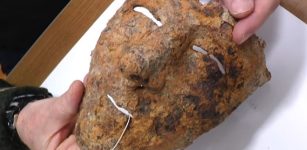 Extremely Rare Roman Cavalry Parade Mask Discovered In Romania
Archaeology | Feb 8, 2023
Extremely Rare Roman Cavalry Parade Mask Discovered In Romania
Archaeology | Feb 8, 2023 -
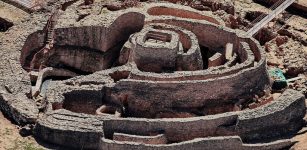 Motilla del Azuer: Impressive And Unusual 3,200-Year-Old Fortress
Featured Stories | Nov 13, 2018
Motilla del Azuer: Impressive And Unusual 3,200-Year-Old Fortress
Featured Stories | Nov 13, 2018 -
 Incredibly Well-Preserved Viking Age Ski Discovered Under Melting Ice
Archaeology | Nov 8, 2022
Incredibly Well-Preserved Viking Age Ski Discovered Under Melting Ice
Archaeology | Nov 8, 2022 -
 Archaeologists Refute Claims That A Comet Destroyed Hopewell Culture
Archaeology | Aug 11, 2023
Archaeologists Refute Claims That A Comet Destroyed Hopewell Culture
Archaeology | Aug 11, 2023 -
 Mysterious City Lost In The Sands And Its Hidden Treasures
Ancient Mysteries | May 21, 2018
Mysterious City Lost In The Sands And Its Hidden Treasures
Ancient Mysteries | May 21, 2018 -
 Mystery Of Zendan-e Eskandar – Alexander The Great’s Prison
Featured Stories | Oct 14, 2020
Mystery Of Zendan-e Eskandar – Alexander The Great’s Prison
Featured Stories | Oct 14, 2020 -
 Mystery Of The Large Ancient Boulders In Ireland And Britain – Possible Connection To The City Of Troy?
Featured Stories | Oct 17, 2023
Mystery Of The Large Ancient Boulders In Ireland And Britain – Possible Connection To The City Of Troy?
Featured Stories | Oct 17, 2023 -
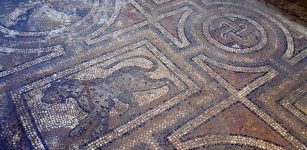 Ruins Of A Roman-Era Bath And A Floor Mosaic Discovered In Central Anatolia
Archaeology | Dec 28, 2015
Ruins Of A Roman-Era Bath And A Floor Mosaic Discovered In Central Anatolia
Archaeology | Dec 28, 2015 -
 Antisthenes And Diogenes – Founders Of Cynicism Were Ancient Greek Philosophers
Ancient History Facts | Jan 7, 2018
Antisthenes And Diogenes – Founders Of Cynicism Were Ancient Greek Philosophers
Ancient History Facts | Jan 7, 2018 -
 Stunning Ancient Lod Mosaic With Message Of Approaching Danger To The Ship At Sea
Artifacts | Aug 14, 2023
Stunning Ancient Lod Mosaic With Message Of Approaching Danger To The Ship At Sea
Artifacts | Aug 14, 2023 -
 Mystery In The Stones: Rujm El-Hiri (Wheel Of Ghosts) Was Not An Ancient Observatory – So Why Was It Built? – New Study
Archaeology | Jan 2, 2025
Mystery In The Stones: Rujm El-Hiri (Wheel Of Ghosts) Was Not An Ancient Observatory – So Why Was It Built? – New Study
Archaeology | Jan 2, 2025 -
 Archaeologists Use Laser Technology To Create Digital Models Of Ancient Artifacts
Archaeology | Jan 28, 2016
Archaeologists Use Laser Technology To Create Digital Models Of Ancient Artifacts
Archaeology | Jan 28, 2016 -
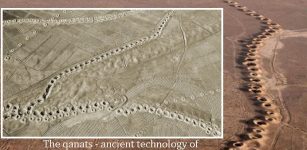 Qanats: Ancient 3,000-Year-Old Underground Irrigation Canals Invented By People Of Persia
Ancient Technology | Jul 13, 2020
Qanats: Ancient 3,000-Year-Old Underground Irrigation Canals Invented By People Of Persia
Ancient Technology | Jul 13, 2020 -
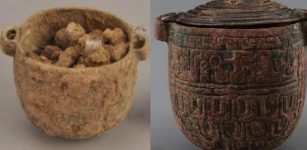 2,700-Year-Old Face Cream For Men Found In Chinese Tomb
Archaeology | Feb 10, 2021
2,700-Year-Old Face Cream For Men Found In Chinese Tomb
Archaeology | Feb 10, 2021 -
 Incredible Mammoth Ivory Male Head From Dolni Vestonice, Czech Dated To 26,000 BC
Artifacts | Jun 23, 2015
Incredible Mammoth Ivory Male Head From Dolni Vestonice, Czech Dated To 26,000 BC
Artifacts | Jun 23, 2015 -
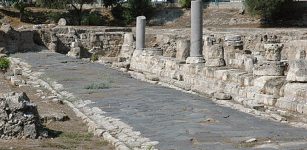 Biblical City Of Tarsus: Excavations Reveal Its Secrets From Paul the Apostle’s Times
Archaeology | Jan 4, 2016
Biblical City Of Tarsus: Excavations Reveal Its Secrets From Paul the Apostle’s Times
Archaeology | Jan 4, 2016

